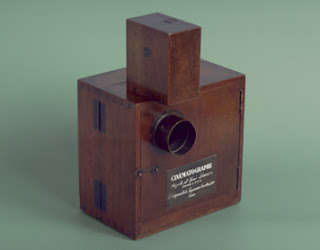In camera editing
In camera editing was pioneered by the Lumiere brothers in 1985. In camera editing is where the film is shot and edited in the camera once the film sequence is shot. The Lumiere brothers would have had to have filmed there videos using one real of film so they would have to film there pieces of film in the order that they would have wanted the film to be seen as they had no way to change the sequence around. To make cuts the Lumiere brothers would have had to bring the film to a stop.

Film
Film editing is where the the film editor works with raw film choosing the shots and sequences that they want. The shots are captured on film unlike now where the film is captured on a memory card, usb or disk.
Analogue
Before digital editing was introduced people would have had to edit film the analgue way which is physical editing. Analogue editing is where the film is cut using a splicer which you would then have to place the pieces of film together physically in the sequence you would want and glue them together.
Digital
Digital editing is the new way to edit film and is used more than Analogue editing now a days. Digital editing is where the footage of film is edited on a computer using editing software which allows you to add more than analogue editing would for example you can add effects onto the footage and text etc.
Splicing
Splicing is used in Analogue editing it allows the editor to cut the film and line the film and place in order and cut the film where they want. After splicing the film would then be glued together.
Seamless/Continuity editing
Seamless editing was pioneered by DW Griffith who used seamless editing to make cuts between shots which matches the action. DW Griffith was an early pioneer who developed the idea of putting together different types of shots, angles and movement in order to give the film a sense of pace. Continuity editing is where the shots are arranged to create a sequence of events that can be edited clearly.
Montage
Eisenstein was a Russian man who developed editing techniques by inventing montage. A montage consists of shots that are put into a sequence to condense time, it is usually used to show the difference in time.
Following the action
This is where the film will follow the subject or actors showing more than one camera angle, showing the transition between movements that correspond with the movements beforehand. When following the action the transition will be a clear link of the last movements to make the sequence smoother. DW Griffith also uses following the action within his short films.
This is a good example of following the action as when the people go out of the door we are then outside watching them come out of the door as though the camera has followed there movements before they make them.
Shot Variation
This will be where there are different camera angles and movements that are used to create a sequence of images. In the example above shot variation is used as there are different camera angles throughout as there are Long shot and medium shots throughout.
Manipulation of time and space
This is where the editor makes a person/subject or environment change over a period of time.
Motivated
A technique where the editor decides which direction the scene is going to take. The editor could follow a conversation with people in an interview and then cut to the person who is talking.
Parallel Editing
Parallel editing can also be known as cross cutting which is where the editor shows two things happening at the same time, by doing this you can create anticipation for the audience.
180 degree rule
The 180 degree rule is where an imaginary line is created that works as a guide for where the camera could be placed. If the 180 degree rule is broken then this could have a disruptive effect confusing the viewer. Below is diagram example of how the 180 degree rule works, it shows how the camera at the top left could not be used as this will show a change in angle and positioning in the people so the imaginary line is created to make this less confusing to the viewer.
Transitions
Transitions are used in editing to link two scenes together. There are lots of different types of transitions that can be used an example of some are: Wipes, Slides, Iris, Cut, Fade, Dissolve.
Point of view shot
The point of view shot can be created using point of view shots and over the shoulder shots. To create a point of view shot the editor will put together clips of a subject or actors together, it usually shows what the actor is looking at then cuts to the actors face to show there point of view.
The point of view shot can be created using point of view shots and over the shoulder shots. To create a point of view shot the editor will put together clips of a subject or actors together, it usually shows what the actor is looking at then cuts to the actors face to show there point of view.
Cross Cutting
Cross cutting is mainly used in film editing and is where the camera will cut away from one piece of action to another piece of action. It establishes action occuring at the same time.The video below is an example of cross cutting by DW Griffith at 7:03 minutes you can see a woman cant afford the extra price for a loaf of bread and she has to walk off hungry then it cuts to the action of rich people eating and drinking, this is showing the action of a poor person and rich person.
